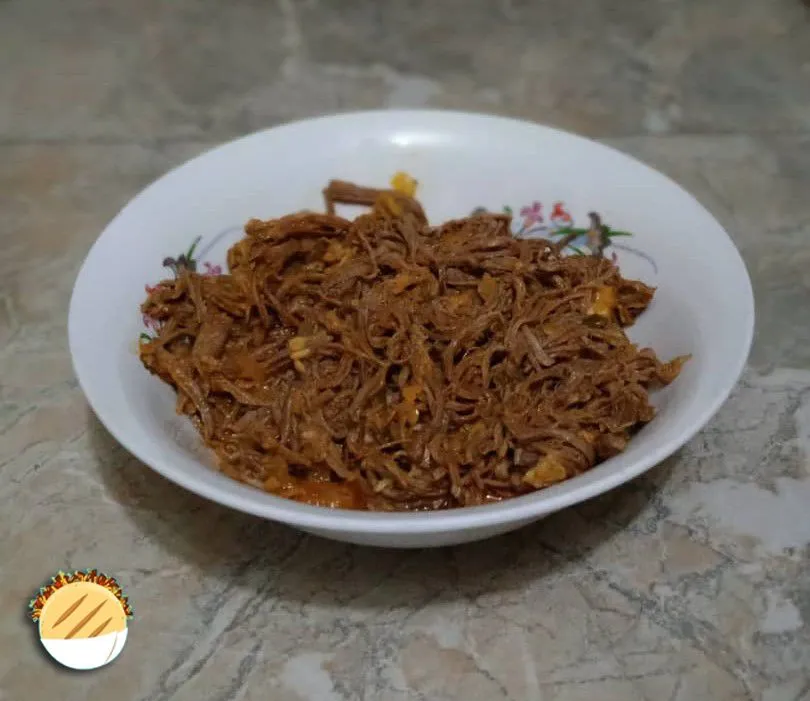
What’s up, friends of Foodies Bee Hive! Today I want to share with you a typical food of my country (Venezuela), the quintessential breakfast of all of us, so versatile that it can be accompanied literally with anything, it is none other than the arepa. Last July 11 was celebrated the international day of the arepa and I celebrated it with one of its most famous, the Pelúa, which consists of arepa stuffed with shredded meat and yellow cheese.
For those who don't know, the arepa is a corn flour based food, circular in shape and quick to prepare, which can be grilled or fried.
¡Qué tal amigos de Foodies Bee Hive! Hoy quiero compartir con ustedes un alimento típico de mi país (Venezuela), el desayuno por excelencia de todos nosotros, tan versátil que puede acompañarse literalmente con lo que sea, no es más que la arepa. El pasado 11 de septiembre se celebró el día internacional de la arepa y yo lo celebré con una de sus más famosas, la Pelúa que consiste en arepa rellena de carne mechada y queso amarillo.
Para los que no lo saben, la arepa es un alimento a base de harina de maíz, de forma circular de rápida preparación, que puede ser asada o frita.

What ingredients will we need? / ¿Qué ingredientes vamos a necesitar?

For the Arepa:
- 2 cups of Corn Flour
- 2.5 cups of water
- 1 teaspoon of salt.
For the filling
- 500 grams of shredded meat
- 300 grams of grated yellow cheese
- Butter
- These ingredients are for approximately 4 arepas.

Para la Arepa:
- 2 tazas de Harina de Maíz
- 2,5 tazas de Agua
- 1 cucharadita de Sal.
Para el relleno:
- 500 gramos de Carne Mechada
- 300 gramos de Queso amarillo rallado
- Mantequilla
- Estos ingredientes son para 4 arepas aproximadamente.

Preparation / Preparación

In a large bowl, place the cups of water and add the salt until dissolved. Once the salt is dissolved, we proceed to slowly add the cups of flour, stirring with our hands, once everything is in the bowl, we begin to knead with both hands for approximately 3 minutes or until the dough does not stick to the fingers and has no lumps.
En un bol grande, colocamos las tazas de agua y añadimos la sal hasta disolver. Una vez disuelta la sal, procedemos a agregar de manera lenta las tazas de harina, revolviendo con nuestras manos, una vez que ya esté todo en el bol, comenzamos a amasar con ambas manos aproximadamente por 3 minutos o hasta que la masa no se pegue en los dedos y no tenga grumos.

Let the dough rest for a few minutes and preheat the budare, which is a clay or iron plate used to bake the arepas. We put a little bit of oil and proceed to place the arepas. We take the dough and in our hands we make small balls that we are going to flatten until we give them a circular shape.
Dejamos la masa reposar durante unos minutos y vamos precalentando el budare que es un plato de barro o hierro empleado para cocer las arepas. Colocamos un poquito de aceite y procedemos a colocar las arepas. Tomamos la masa y en nuestras manos hacemos unas bolitas que luego vamos a ir aplastando hasta darle la forma circular.

Roast the arepas until they are golden brown, approximately 6 to 8 minutes.
Asamos las arepas hasta que estén doraditas, aproximadamente durante unos 6 a 8 minutos.

The meat is reserved from a previous preparation.
La carne la tenemos reservada de una preparación anterior.

Grate the yellow cheese and reserve on a plate.
Rallamos el queso amarillo y reservamos en un plato.

Arepa filling:
Open the arepa lengthwise, taking care not to break it, so that it looks like a bag where the filling will go. Then we spread a little butter inside.
Then we place the filling, first the shredded meat and then the yellow cheese and that's it, we have our traditional arepa pelúa. It is called this way because it is made of Venezuelan style shredded beef (in Venezuela we call "carne mechada" to the strands of beef boiled and then shredded and then stewed) and grated cheese and when we put these two ingredients in the arepa it looks like an abundant and disheveled scalp.
Relleno de la arepa:
Abrimos la arepa por la mita de forma longitudinal, cuidando de no romperla, de forma que quede como una bolsa donde irá el relleno. Luego untamos dentro un poco de mantequilla.
Posteriormente colocamos el relleno, primero la carne mechada y luego el queso amarillo y listo, ya tenemos nuestra tradicional arepa pelúa. Se le dice así porque está hecha de carne mechada al estilo venezolano (en Venezuela llamamos “carne mechada” a las hebras de carne de res hervidas y luego deshilachadas y posteriormente guisadas) y queso rallado y al poner esto dos ingredientes en la arepa parecen una cabellera abundante y despeinada.


You can accompany this delicious arepa with a glass of juice of your choice.
Puedes acompañar esta rica arepa con un vaso de jugo de tu preferencia.

